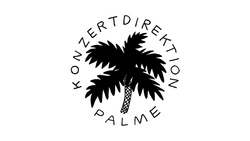Albertine Sarges
In the organizer's words:
Following their acclaimed record release concert in Berlin in February 2025, Albertine Sarges will be touring Germany in November 2025 - with almost the original line-up from the early days when the band still performed under the name Albertine Sarges & The Sticky Fingers.
On board is bassist Rosa Mercedes, who has returned to the port of Berlin after four years in Australia, improvisation artist Lisa Baeyens on flute and Sarges' co-producer Lo Selbo on percussion/electronica. Together they present a new interpretation of their songs - airy and artfully arranged, with a fine sense of space and silence that consciously allows for pauses and explores the soundscape with particular sensitivity. The set is also enriched by several new compositions - because something new is already on the horizon...
Albertine Sarges' debut album The Sticky Fingers (2021) on the London label Moshi Moshi was a surprise success. It was Album of the Day and Album of the Week on BBC6 and Radio X, and her songs were on rotation. This didn't go unnoticed in Germany either: VUT Awards and Deutschlandfunk Kultur nominated her as Newcomer of the Year 2021. 2023 saw the release of Family of Things (EP). Their second LP Girl Missing was released on February 21, 2025 (Moshi Moshi Records).
The cover of Girl Missing is adorned with a mural from the oldest St. Mary's Church in Rome. A pair of silent eyes stare ghostly out of an otherworldly nothingness. Work on the album began with a disappearance. A close friend of Albertine Sarges broke off all contact without comment. Memorabilia and open threads were left behind. The Berlin native withdrew and began to piece together a mosaic of songs. The result was the image of a monumental longing.
Girl Missing is not a sad album. Behind the loss is the realization of how good it is to keep on loving, even if what you love disappears. This desire for connection has always been a driving force behind Sarges' musical work. Perhaps Girl Missing is not a missing girl, but a missing girl. She translates the inherent pain into an outwardly radiant musical experience full of joie de vivre. With each of the album's 13 songs, the singer appears more, steps out of the darkness and stands in the room as the subject of her love.
Eclectic but never epigonal, the tracks are strung together with a large musical vocabulary. Impressions of indie rock, blues, artpop and the golden age of the 70s suggest themselves, but do not impose themselves. Albertine Sarges may have developed her musical diversity as a collaborator in various genres (Kat Frankie, Holly Herndon, Christiane Rösinger, Ostia).
The album was created in two very different places. On the one hand, in the concrete landscape of a commercial district in Berlin-Marzahn, where Sarges spent many winter weeks, illuminated only by the small lamp on the windowsill, probing the sensibilities of her confessional songs. The other was in the British coastal town of Margate, a small town with colorful houses whipped up by gusts of wind and the cries of seagulls, where she developed the songs together with her musical partners in a music studio belonging to her London label, the PRAH Foundation.
This content has been machine translated.Artist | Musician
Organizer













